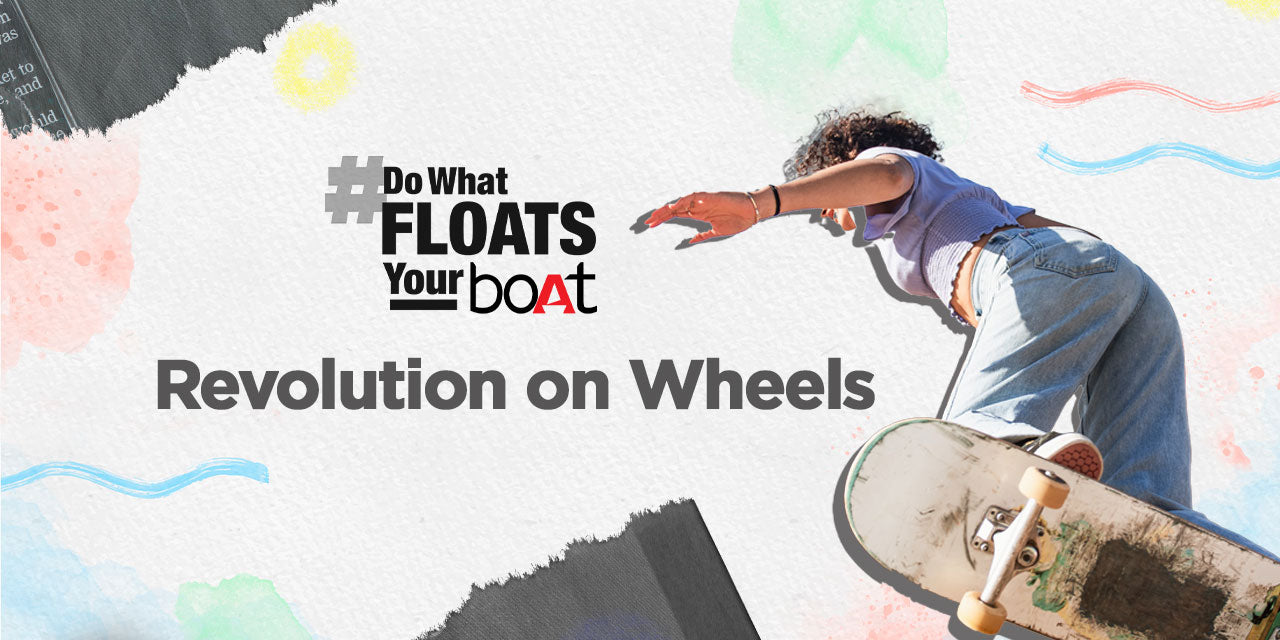Blog

How Does Graffiti Contribute to the Community?
Today’s musings take us to a place 15 minutes away by car from our HQ in Delhi. Yo, it is time to hit Lodhi Street. But we are not here to talk about the place’s history. It is what is on the walls that we can’t stop thinking about.
Graffiti.
You must have seen it (and admired it) with your own eyes, too – not just in here but across swathes of urban India. Pondicherry, Panjim, Bengaluru, Chennai, Kolkata...it is hard to separate the magnificent murals, paintings and art (or anti-art, as many label it) in a zillion colours from similarly evocative communities splashed across the country.
But it is not just art. Graffiti is a message that channels the voice of the voiceless, the hustle of the restless, and the spirit of those who believe in #DoWhatFloatsYourboAt. And by perpetuating such messages artistically, graffiti contributes to the community in more ways than we can imagine.
Graffiti is the act of breaking down walls by painting them.
One need only Google pictures of the demolished Berlin Wall – once upon a time touted to be the largest canvasses in the world. Filled with scribblings and paintings of global artists under anonymity, the Wall carried messages of hope, sorrow, misery, faith, satire, love and more – all spray painted into existence. Above all, the Wall’s graffiti became a message board for all things political and social – echoing what the community felt and wanted.
Then, the Berlin Wall came down in 1990, and all the expressions of everyone who etched its surface found liberation. Such is the power of graffiti as an art form that brings to surface the hidden desires of the public, giving it a platform to advertise, spread awareness and inspire action.
Just like the rest of the world, in India, it is not uncommon to see wall art on issues like poverty, hunger, women empowerment, abuse, environment, etc. And when you ponder at the message behind the graffiti, you know a fire has been stoked in your heart. Praise be to the artists with a cause!
Graffiti is a force for transformation for communities.
Beyond the social and political commentary through which graffiti has become a modern-day weapon for truth, it is also a tool to spark back life into communities.
With a stroke of genius, artists transform dilapidated houses, shanty streets and obscure urban corners into happening spots. All it takes is imagination, talent and the will to mark public walls with expressions of self, of the society, of culture and of local identity. And lo and behold we have a landmark that infuses new life into a community and brings them a lot of opportunities and limelight to earn a better livelihood.
Know that urge to take a selfie or drop an Instagram story while posing beside graffiti art? That is what we are talking about. That is what you love and the community that you are promoting loves.
Graffiti inspires revolutionaries.
Spray cans can start revolutions – and the first one often begins at home for those who hold them. To pursue graffiti can often be termed as breaking the norm. It is a hustle that is infused with meaning and madcap passion. And those who dare to float their own boat – India’s bustling community of graffiti artists – are like modern-day Robinhoods, taking art from the galleries and museums and into the arms of public streets.
They look up to names like UK’s legendary Banksy or our very own Tyler from Mumbai and continue to start kickass conversations through art. And while their art-adorning walls might get whitewashed in many instances, the art lives on forever – some in our hearts, some on digital.
In the words of Tyler, “Graffiti is often looked upon as vandalism, but I don’t destroy. I create. I take a neglected wall and give it meaning.” This devotion to creating change is what continues to inspire others to pick up their own tools of revolution and dare to go beyond the mainstream – all in the pursuit of the greater good.
To all those who leave their mark on the world quite emphatically, we at boAt say, keep at it and do what floats your boAt!

Liberation through skateboarding: How the sport empowered...
Good things happen when people come together for a cause. And it becomes all the more awe inspiring when it is pulled-off against great odds. Be it change of the landscape of Alwar from complete barrenness to a plush green area, purely on the efforts of the local communities; or the creation of a safe place like Skateistan for children in a war torn Afghanistan.
Places like Skateistan where people from different communities come together and express themselves became a place for the kids to be free, and to momentarily forget all conflicts around them. What happened in Afghanistan was inspiring to Ulrike Reinhard and gave way to the idea of a Skate park in a small village in the heart of India.
Located in Madhya Pradesh, Janwar is like any other small village in India and has its own social evils. It was a place where educating girls was not deemed important, the unsaid rules of the caste system still affected people’s actions. To disrupt this set-up with the construction of a skating park was a game changer, where children from all communities would play. While the initial intentions of Reinhard was to set-up schools, the idea transformed into the setting up of something off-beat.
Metaphorically, the skating park and its vibe was a counter culture to the status quo. A place where kids from different communities could come together. The girls in Janwar seized this opportunity to step out. Now they had a common place where they could be free, feel the wind brushing their cheeks, experience true freedom during the moments spent on the board. They were not bound by the boundaries of their house, instead they had a place where they could move around freely without any hindrance. Skating in the rink was liberating for them. Soon enough, skateboarding was the best thing that happened in their life. So, from being a mere escape route, skateboarding became a passion for them. It gave them a chance to come out of the boundaries of their house. Where in a normal scenario they would have been married by the time they hit their 20s, handling their family. In doing what was making them feel happy, they broke those shackles of the society. In following what they like, they started to do what floats their boAt.
And so it happened. With the girls coming out, the skating rink in Janwar, the Janwar Castle, became a place where the lines of differences blurred. Kids irrespective of their caste or gender were playing in the same rink. Still for them to take on skateboarding was taking on a “boys sport”. The rink was still dominated by the boys. The few girls present there were looked down on and were welcomed with nasty comments. So the “girls first” rule was introduced to challenge the otherwise “boys first” culture prevalent in the village. All this happened because a few girls dared to step out of the “domestic”. This stepping out in itself was a rebellion to the norms of the place and now they were zooming past on skateboards. Changes like this are bound to get some resistance. But the girls still persisted to do what floats their boAt.
With the girls moving out and doing what they liked, they also opened a plethora of opportunities themselves. They got a chance at education. They got to pursue skateboarding as a full-time career. Asha Gond with Reinhard’s help got a chance to study abroad. She and a few other kids from the village represented India at the World Championship of skateboarding, and won accolades at multiple championships. Things were improving for them with all of it riding on their grit to achieve something.
These achievements on the surface also got them something better. The environment around them was changing. More importantly, they had brought about this change. They did for themselves what history could never do for them. They broke gender and caste barriers and brought communities together. The rule of “no skating, no school” coupled with “girls first” attitude in the rink improved the attendance in schools, especially for girls.
All this on the efforts of Gen-Z in the village.
These efforts are not in isolation. They have a domino effect. After Janwar Castle being the first skating park in rural India, you also see a similar thing happening in Khempur, Rajasthan. During the making of Skater Girl, Khempur got its own Desert Dolphin Skatepark. Which will eventually open doors for the kids there like it did for the kids in Janwar. As they strive to do what floats their boAt, they will also get a chance to turn the tables for a brighter future.
































